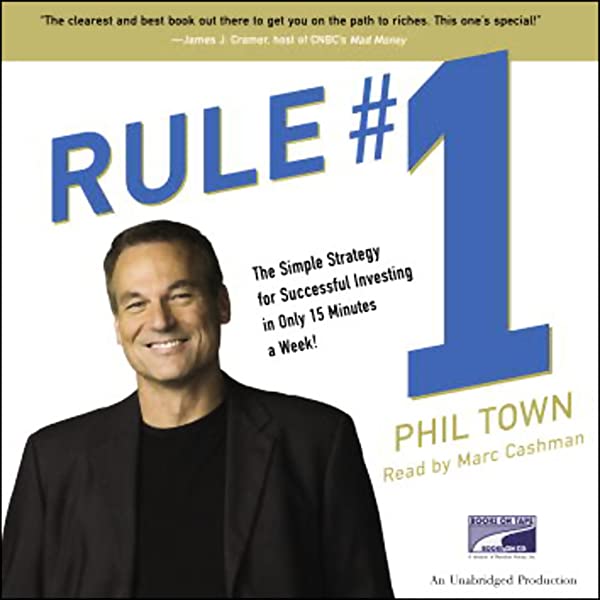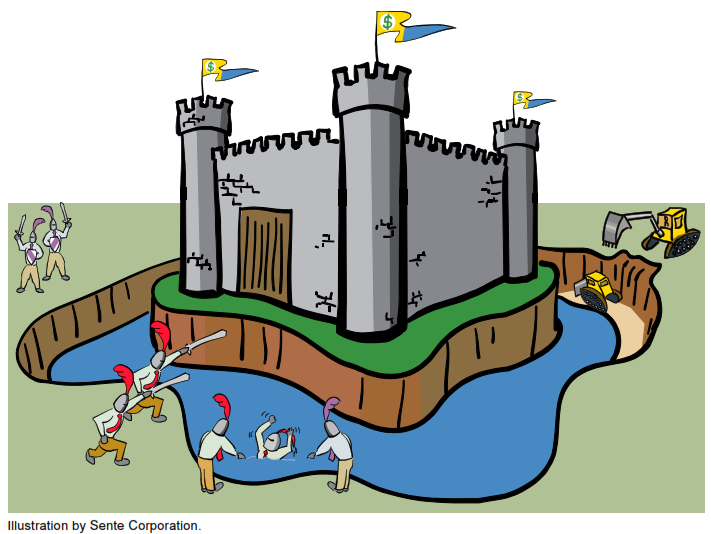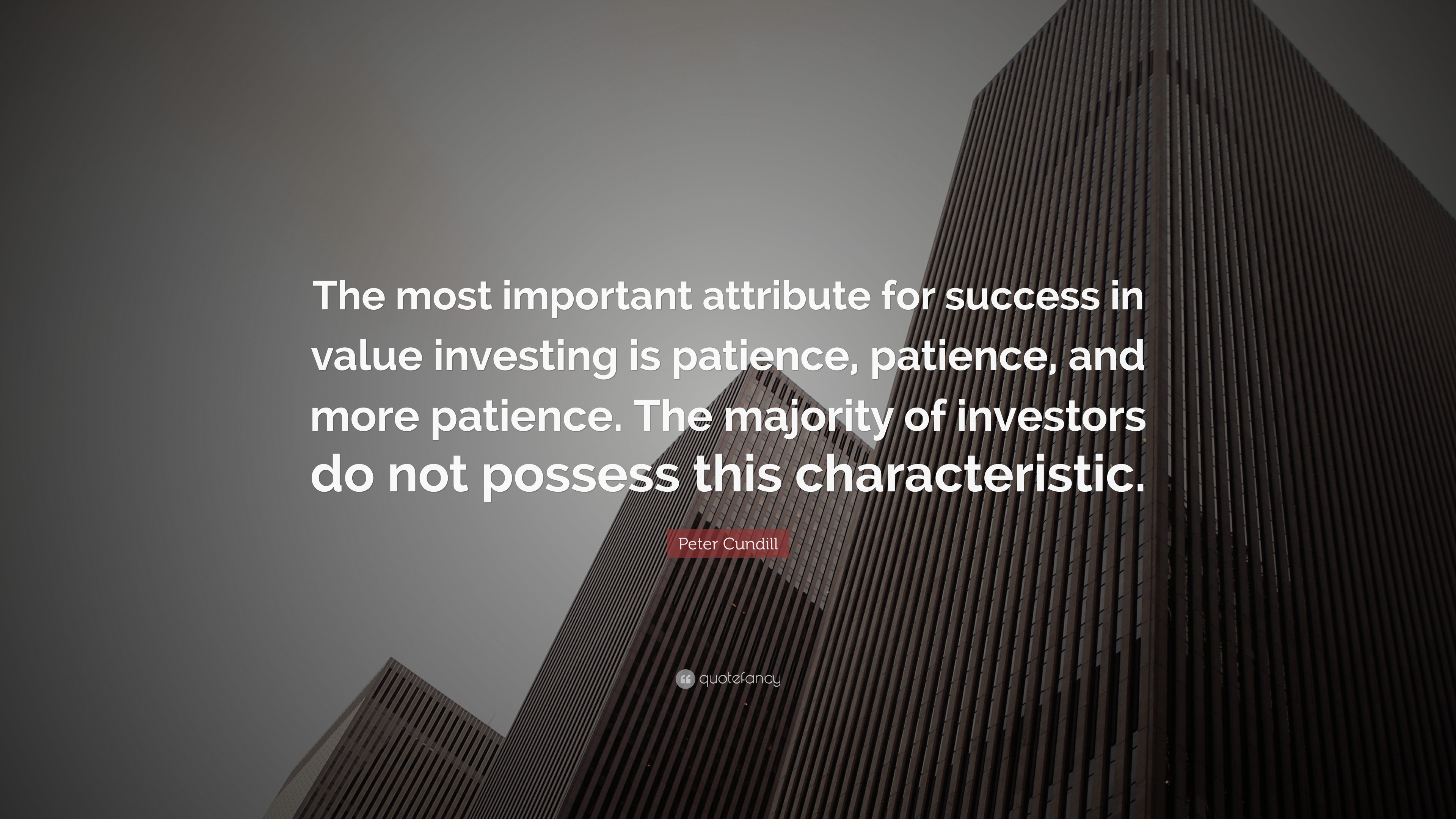Warren Buffett’s writings are essential reading for any investor. He teaches timeless lessons on management and gives a sweeping bird’s-eye view that distils multiple complex business concepts.
But Buffett is scant with the specific steps to apply his method to our investing. Beginner investors learning the fundamentals of value investing need a frog’s-eye view instead — getting into the mud and deep into the details.
This is the promise of the book Rule #1 by Phil Town. It’s a must-read for anyone looking to learn the nitty-gritty of finding and evaluating businesses using his simple four-step method of investing.

This article was submitted by a Guest Contributor.
What is Rule #1?
Town’s investing philosophy can be summed up in a quote from Warren Buffett.
“There are only two rules of investing: Rule #1: Don’t lose money…and Rule #2: Don’t forget Rule #1.”

This statement captures the main focus of the book: how to take significant risks out of investing by buying a wonderful business at an attractive price.
take significant risks out of investing by buying a wonderful business at an attractive price
This sounds like common sense, but Town makes the following observation.
We hunt for the best deals on clothes, food, appliances and more in our everyday life. We love the thrill of snagging items priced well below their actual value. So why don’t we take the same approach when buying stocks?
If you can keep items in your cart until 11.11 to score huge discounts on Shopee, you can exercise the same patience and wait for the stocks on your shopping list to go on sale.
To find a wonderful company at an attractive price, Town outlines a process he calls “the Four Ms”.
Meaning, Moat, Management, and Margin of Safety.
In essence, you have to answer four questions before placing the buy order.
- Does the business have Meaning to you?
- Does the business have a wide Moat?
- Does the business have great Management?
- Does the business have a big Margin of Safety?
Let’s break down each principle.
Meaning
It’s important to invest in a business that you find meaningful. Doing so ensures you are likely to have a stronger understanding of the business and think long-term.
A good test to find if a business has meaning to you is to use the 10-10 rule.
If you’re not willing to hold a stock for 10 years, don’t even think about owning it for ten minutes.
To be clear, this does not mean you cling to bad investments. It’s simply a rule to force you to think carefully about what you buy.
Town recommends an exercise to find businesses with meaning to you. Ask yourself three questions:
- What do you love to do, professionally and recreationally?
- What things do you excel at?
- What do you do to make money, or what do you spend money on?
These represent your “Passion”, “Talent”, and “Money”, respectively.
Next, draw a Venn diagram with three circles with these headings. It should look something like this:

Write down the answers for each question. The ones that show up in all three spheres are your sweet spot — they represent businesses that have meaning to you, that you understand best and thus have the biggest edge over other investors.
Invest in industries where you have first-hand experience and insider knowledge. This can be summed up by the investor Peter Lynch’s principle: Invest in what you know.
Once you have a list, the next step is to evaluate whether each business has a moat.
BTW – we share commentary on Singapore Investments every week, so do join our Telegram Channel (or Telegram Group), Facebook and Instagram to stay up to date!
I also share great tips on Twitter.
Don’t forget to sign up for our free weekly newsletter too!
[mc4wp_form id=”173″]
Moat

An economic moat is a sustainable competitive advantage that enables a company to protect its profits and market share from competitors.
Any company you invest in needs to have a wide moat to ensure they can stay around for the long term.
Another advantage of a wide-moat business highly relevant to today’s environment: it can withstand inflation because it can raise prices to cover rising costs.
Town writes that a company can have five moats:
- Brand: a product you’re willing to pay more for because you trust and love it, e.g. Nike
- Secret: a business that has a patent or trade secret that makes direct competition illegal or very difficult, e.g. Pfizer
- Toll: a business with exclusive control of a market — giving it the ability to collect a “toll” from anyone needing that service or product, e.g. Visa
- Switching: a business that’s so much a part of your life that switching isn’t worth the trouble, e.g. Apple
- Price: a business that has economies of scale to price products so low no one can compete, e.g. Amazon
Determining if a business has a moat is subjective. But numbers don’t lie. A business with at least one of these moats will be evident from its financial statements.
Town picked the five most important metrics to evaluate a business: Return on Invested Capital (ROIC), Free Cash Flow, Sales, Earning Per Share (EPS) and Equity.
He writes: “A sign of a business with a moat should generate more than 10% annually for the last 10 years for all five metrics.”
Management

Good management can turn an ailing business around; bad management can destroy a dominant company.
That’s why you need to invest in businesses with outstanding leadership. Betting on a good CEO means you can sleep well knowing that an “honest, owner-oriented, and driven person” is working hard to make you money.
Red flags are CEOs who draw huge salaries (even when the business is performing poorly), or have poor track records. Conversely, a green flag is a CEO whose majority of their personal net worth is tied up with the business. This ensures their incentives are directly aligned with the long-term interests of shareholders.
Owner-CEOs are more likely to act with integrity and are more driven. These are inherently subjective qualities that are difficult to assess. But the internet shines a much stronger spotlight on a CEO’s track record than ever before.
At the time of Rule #1’s publication, this was mostly limited to newspapers and magazines. Now, you can access quarterly earning calls and transcripts, podcast interviews, and much more.
Margin of Safety

So far, all three steps help you to find wonderful businesses that have meaning to you, possess a moat, and have good management. But the next step is the most critical — buying the business at an attractive price.
This brings us to what Town calls “the three most important words in investing”: Margin of Safety. This is the concept of buying a business at a price significantly lower than its intrinsic value. Town recommends a 50% Margin of Safety.
With such a big buffer, you can still likely make a great return even if you get many things wrong in your estimate. Or, at the very least, you won’t break Rule #1.
How to calculate a stock’s intrinsic value
But how do you determine a business’s true value?
You must figure out what it will be worth 10 years from now. This is almost impossible to predict, but you can make an educated guess by looking at the business’s past performance.
From there, you make assumptions about its future growth rate, P/E ratio, and your minimum acceptable rate of return (15% per year, in Town’s case). Once you punch in the numbers, you’ll get the true value of the company’s stock. Slash that price in half, and that is your Margin of Safety price.
In other words, this is a discounted cash flow (DCF) analysis. The great thing about the book is it shows you step-by-step how to calculate the figures.
His full explanation is out of the scope of this article. But if you want to learn more, I highly recommend watching this fantastic YouTube video, which gives an excellent overview.
Patience is key

Opportunities to buy wonderful businesses with a 50% Margin of Safety don’t come often. So it’s unlikely the stock will be at your target price immediately after calculating it.
So, you’ll have to put the business on a watchlist for later when it goes on sale. You may have to wait months or even years. Be patient. As we’ve seen in 2022, market sentiments can shift in an instant. Seemingly invincible companies in 2021 saw their valuation crash the next year.
To explain this concept, Town introduces the fictional figure, Mr Market, popularised by Benjamin Graham. He serves as a metaphor for the stock market, representing the day-to-day changes in stock prices and the emotions of trading.
Mr Market can be volatile and irrational, sometimes offering prices that are too high and at other times offering prices that are too low. The lesson is to take advantage of Mr Market at his most manic-depressive when he’s offering prices way below their intrinsic value.
And when the time comes, prepare to act boldly.
Charlie Munger said it best: “The wise ones bet heavily when the world offers them that opportunity. They bet big when they have the odds. And the rest of the time, they don’t. It’s just that simple.”
The wise ones bet heavily when the world offers them that opportunity. They bet big when they have the odds. And the rest of the time, they don’t. It’s just that simple
Conclusion
Rule #1 by Phil Town is an excellent introduction to value investing.
Investors can make more informed decisions using the 4M system and avoid common pitfalls. Whether you are a beginner or an experienced investor, Rule #1 is a valuable resource for anyone looking to improve their foundational skills.
Trust Bank Account (Partnership between Standard Chartered and NTUC)
Sign up for a Trust Bank Account and get:
- $35 NTUC voucher
- 1.5% base interest on your first $75,000 (up to 2.5%)
- Whole bunch of freebies
Fully SDIC insured as well.
It’s worth it in my view, a lot of freebies for very little effort.
Full review here, or use Promo Code N0D61KGY when you sign up to get the vouchers!